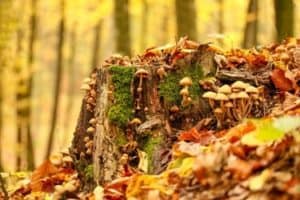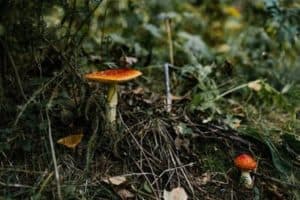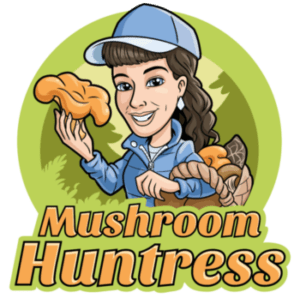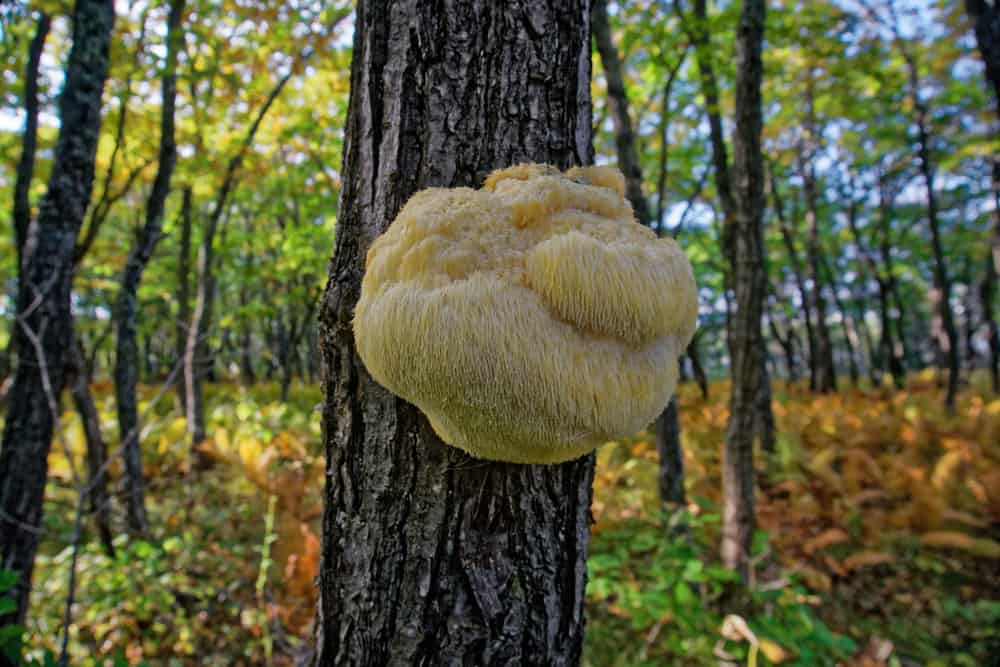
Mushrooms are fascinating organisms that are an important component of the ecosystem. However, if you find one growing on a living tree, you might have to get your hands dirty, quite literally.
Mushrooms are tell-tale signs that a tree isn’t in the best health. Therefore, by the time you notice a mushroom sitting on your tree bark, it has already built an interior network. Furthermore, it’s consuming the tree from within.
In this guide, we’ll explore what it means when you see mushrooms growing and trees, the types, and much more. Read on!
What Are Mushrooms?
A mushroom refers to the fruiting body of a fungus, and fungi define the ‘kingdom’ that includes mold and yeast. Some fungi spread a network of threads via the ground or other organic material known as mycelium. It’s this network that eventually sprouts fruits which are the mushrooms you see on the surface.
Fungi were some of the initial organisms to colonize land, are responsible for soil creation that serves as the foundation for animals and plants to spread on Mother Earth. They are still crucial in forest growth, distributing nutrients from one tree to another and aiding in the breakdown of dead wood, channeling nutrients back into the soil. It’s worth noting that if a tree has been weakened, a fungus can swoop in and leech off the tree’s nutrients while it’s still alive.
What Causes Mushroom Growth on Trees?
There’s a boatload of stressors that may cause fungi to grow on trees.
Soil Conditions
While you may not realize it, sub-optimal soil conditions ranging from drought and soggy to compacted soil can result in damage to the root trees. In turn, fungi such as Armillaria that thrive on the root surface or soil will invade.
Physical Damage
Wounds to a tree, for instance, scrapes or cuts expose the interior tissue, allowing mushrooms to grow. These wounds may stem from straps left on a tree base after it was planted, broken limbs, and ice damage.
Furthermore, pruning can leave trees susceptible to mushroom growth on them. For that reason, fruit trees, for instance, should be pruned when summer rolls around as spores are least likely to develop.
Types of Mushrooms That Grow On Trees
Let’s explore the mushroom species you’re likely to find growing on trees.
1. Sulfur Shelf
Also known as ‘Chicken of the Woods,’ Sulfur Shelf mushrooms are a recognizable polypore that closely mimics chicken taste, making it an ideal meat substitute. What sets this mushroom species apart from the pack is the vibrant orange, wavy edges, and large fruiting body size.
Although they usually grow on oak trees, avoid eating them if you find them growing on conifers. Individual fruiting bodies can soar up to 12 inches in height and weigh a maximum of 50lbs. The fruity body clusters may get to a length of up to 24 inches.
The delicate, new growth on the mushroom edges is the most edible part. Nonetheless, it’s worth keeping in mind that older specimens can trigger gastric upset for people prone to mushroom allergies.
2. Chaga
It’s a popular type of fungus that thrives on the bark of trees. Also known as Clinker Polypore, Chaga mushrooms don’t resemble a shelf but rather a cracked, crinkly blackish mass that typically grows on the back of birch trees.
While they are not edible and therefore can’t be cooked like other mushrooms, they can be ground into a powder and made as tea as they have incredible antioxidant abilities. Nonetheless, proceed with caution as Chaga mushrooms might interact adversely with particular underlying conditions and medications.
4. Oyster
It’s a true mushroom rather than a shelf fungus that some people attest to taste like oysters. These mushroom species are worth mentioning as you’ll typically find them growing on broadleaf trees, favoring beech, oak trees, and the bark of trees.
Oyster mushrooms have become a staple in a boatload of dishes which is why it’s not surprising that you’ll always find them at your local grocery store. Nonetheless, mushroom foragers can stumble upon a wealth of them when early winter or autumn rolls around.
Bark Mushrooms
Besides Chaga, there’s a wealth of other mushroom species that come in handy for medicinal purposes but aren’t fit for consumption. Instead, they can be dried and ground into a powder and added into smoothies, for instance. Bark mushrooms range from Birch Polypore, Turkey Tail, and Reishi to Artist’s Conk.
1. Dryad’s Saddle
Also known as Polyporus Squamosus, the characteristics of the Dryad’s Saddle mushroom are as follows. Furthermore, it can be categorized as a polypore mushroom.
- Yellow-white with brown scales
- Littered with pores rather than gills
- Fan-shaped with a central stalk
The fruiting season kicks off in spring and ends in the fall. Dryad’s Saddle mushroom results in the white-rot of a tree’s heartwood. The species usually grows on hardwood trees.
2. Turkey Tail
Also known as Trametes Versicolor, Turkey Tail mushrooms are characterized by:
- A thin cap
- A bracket structure
- Yellow-white pores (Polyporus)
- Concentric bands ranging from blue, brown, grey, and yellow to red, coupled with a velvety surface.
The fruiting season of Turkey Tail mushrooms spans from spring to fall. Furthermore, they cause white rot on hardwood trees and leave intricate lines on the affected wood. The outcome is beautiful patterns in objects such as vases and bowls crafted from the ‘spalted’ wood.
3. Honey Mushroom
Also known as Armillaria Ostoyae, Honey Mushroom is characterized by:
- A unique ring on the stem
- A yellow-golden cap
The fruiting season occurs from late summer to the fall. Honey Mushroom causes Armillaria root rot, a widespread and destructive disease in Ontario and parts of the US. It mostly affects the evergreen and deciduous species such as oak, balsam fir, pine, maple poplar, and spruce.
All Armillaria species are luminescent, which means they glow in decayed stem tissue and root. Their networks can be vast, as large as four sq. km.
3. Artist’s Conk
Also known as Ganoderma Applanatum, Artist’s Conk mushroom has the following characteristics.
- A sturdy upper surface with brown-grey patterns of bands
- A white lower surface that becomes brown when exposed to scratches
- A shelf or bracket structure
The fruiting season of Artist’s Conk is perennial and causes butt rot and white stem rot in hardwood trees. It’s the most common perennial wood decay fungus of dying hardwood trees. It is worth keeping in mind that one conk can generate 1.25 billion spores per hour for up to 6 months every year.

How a Mushroom Damages a Tree
Once mushrooms invade their tree hosts, they spread like wildfire across the interior, generating enzymes to break down the tree tissue and convert it into a rich food source. After a while, the fungal network will circle back to the tree surface and fruit mushrooms that will spore and spread the fungus to neighboring trees.
Once a tree has been depleted due to a fungus network from the inside, its limbs are susceptible to breaking, or worse, strong winds topple over the tree. That poses a danger to the surrounding property and people.
While you may not realize, a tree can be extensively hollowed long before you notice the mushrooms on it. Therefore, if the tree is in your backyard, it’s crucial to act quickly if you suspect a fungal infection. Doing so will prevent a bad situation from getting worse.
What to Do When You See Mushrooms Growing On Trees
If you find a mushroom on your tree, leave it as it is. Uprooting it won’t have the effect you desire. Instead, spores will spread rapidly to neighboring trees. We recommend roping in an arborist to get the job done as soon as possible.
They’ll carefully get rid of the infected sections in time to save the tree from being hollowed and a bad situation from spiraling out of control. A professional will also test the soil and neighboring trees to assess their health. Other measures you can take to curb fungal infections on trees are:
- Avoid overwatering your trees
- Ensure there’s proper soil drainage around your trees
- Mulch the tree(s) in your backyard to maintain optimum levels of ground temperature and moisture
- Sanitize gardening tools and prune between trees
- Early spring or late winter is the most opportune time to fertilize your trees as they approach the growing season.
- Layer the surface roots and tree bark with neem oil or other fungicides.
How Does a Tree Fungus Spread?
Fungi spread easily and quickly from one tree to another via:
1. Spores
Countless spores are generated and released by one conk or fruiting structure. The spores can be spread by:
- Rain
- Wind
- Splashing
2. Human Activity
Using gardening and pruning tools to handle infected trees and plants and using the same equipment on healthy trees and plants can contaminate them even when you don’t realize it.
Conclusion
Now that you know the types of mushrooms growing on trees, how, and why they do, remember to exercise caution, especially if you’re foraging species to eat. Consuming a misidentified mushroom can cause adverse illness or be fatal.
We recommend consulting an expert with immense experience in pinpointing and eating wild mushrooms. Lastly, always factor in the tree with which the mushroom species are associated for accurate identification.




